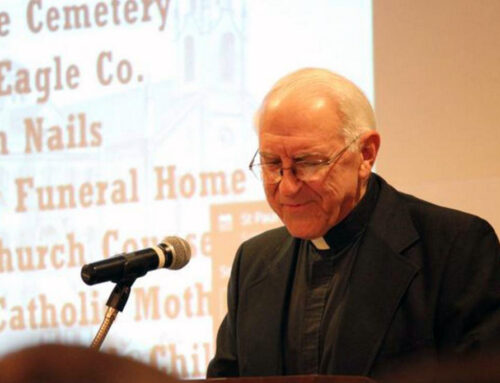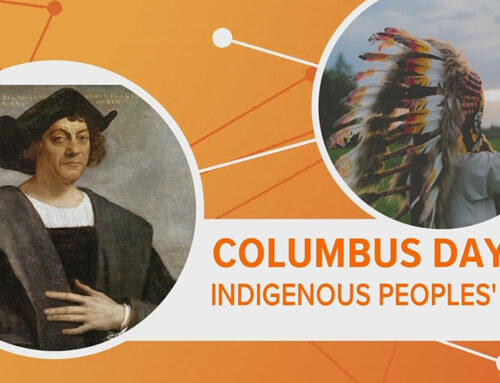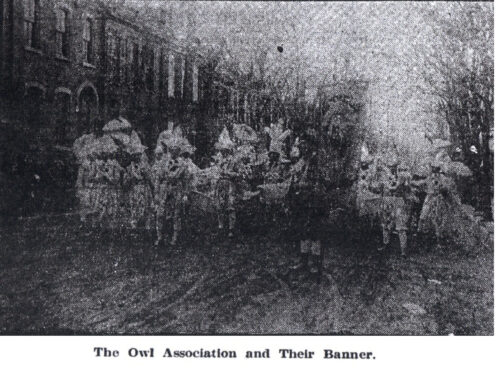Three hundred years ago few Europeans lived in what we now call Berks County. At that time it was the home of wild animals and Indians. Great forests of giant trees were found in its valleys and on most of its rugged hills.
The Indians.
When the Europeans first came here they were most numerous in the vicinity of the Delaware river, but there is no way of determining how many of them there were.
Tribes.
The tribes that dwelt in what is now Berks County or roamed over its forest-covered hills and valleys called themselves the Lenni Lenape, or the original people.
The Lenni Lenape nation was divided into three principal tribes or divisions: the Unamis, or Turtle; the Unalachtgos, or Turkey; and the Monsey, or Wolf. Lenape is pronounced “Leh-NAH-pay” and it means “the people.” Sometimes you will see this name spelled Lenápe or Lenapi instead. The tribe is also known as the Delaware Indians (after the Delaware River, which runs through Lenni Lenape territory.) The Turtle tribe occupied the country between the seacoast and the Blue Mountains and their hunting grounds extended from the Hudson to the Potomac. Their name means “the people down the river.” Their chief abode was on the Pennsylvania side of the Delaware south of the Lehigh River. The surrounding tribes that did not belong to the Lenape Confederacy agreed that they were entitled to the honor of being called grandfathers. As grandfathers they were supposed to have emigrated in a very remote time eastward from the Mississippi. In their travels eastward they are supposed to have conquered the builders of mounds that were numerous in the western valleys.
The Turtle and Turkey tribes were known among the Europeans as Delaware Indians. They were conquered by the Iroquois in 1742, when most of them emigrated to the western part of the State.
The Wolf tribe occupied the mountain regions at the headwaters of the Delaware and the Susquehanna Rivers. They held their principal council fires at the Minisink Flats on the banks of the Delaware just where it receives the waters of the Lehigh. Here they had extensive peach orchards.
The Unalachtgos lived in the vicinity of Chesapeake Bay. Penn bought his land from the Turtle and Turkey tribes.
The exact boundaries of the different tribes are not known. The Delawares occupied Berks County and the territory north and east. The Shawanese occupied the land along the Susquehanna in the vicinity of Harrisburg. The Conestoga Indians inhabited the land along the Conestoga Creek, extending through Caernarvon in Berks and through a part of Chester County.
There were subdivisions of the various tribes, and these were known by the names of the streams near which they lived. Thus we have the Schuylkill, Sacunk, Manatawny, Tulpehocken and Maxatawny Indians.
Occasionally tribes or parts of tribes migrated, owing to sickness or war. The Ganawese, who lived along the Potomac, and were reduced in numbers by sickness, settled near Tulpehocken. The Conestoga guaranteed the good behavior of the Ganawese during their residence in this section.
The Indians were able to endure great hardships. Their sharp eyes enabled them to find their way through the forest by signs of which the Europeans would take no notice. Their chief occupations were hunting, fishing and fighting, though they also liked to dance and run races.
Some things they did.
The Indians made pots of clay mixed with powdered mussel shells burned in fire. In these they prepared their food. They used trees for firewood. Their boats were made of the bark of cedar and birch trees bound together with stout straps of bark. These boats they often carried along when they went on a journey, using them to cross or sail up or down a stream. Boats were also made out of cedar trees of which they burned out the inside, scraping off the coals with sharpened stones or mussel shells.
The men and women dressed in skins and under garments made of wild hemp. Hemp was also made into twine, knit together with the pointed ends of feathers to form blankets. They made their bows as long as themselves; the bowstrings of the sinews of animals killed in the chase; and the arrows of reed about five feet long. At one end of this reed they fixed a piece of hard wood into which they made a hole to fit the head of the arrow. The arrow head consisted of flint stone, hard bone, horn or the teeth of large fish.
The head was glued into the end of the arrow so securely that water could not affect it, and at the opposite end they put feathers. In the abandoned corn fields grew hemp from which their ropes, bridles and nets were made. Pestles about one foot long were used to grind or pound their corn. The first windmills that ground corn surprised them very much.
Their tobacco pipes had stems as long as a man. These pipes and immense bowls were generally given to friends who came to visit them, and were expected to be smoked out before the visit ended. The bowls were made of horn, red, yellow or blue baked clay, or of stone that was so soft that it could be cut and scraped with a hard shell. They also made mats of fine roots and these they painted with all kinds of figures.
They painted their faces red. Those who were most famous had their bodies painted also. The men allowed only a tuft of hair to grow upon the tops of their heads; the rest was pulled out by the roots as soon as it appeared; so they were beardless as well as bald. On their faces, hands and breasts were figures according to their individual fancies. These were made by pricking the skin with thorns and rubbing the bleeding parts with charcoal. The black of the coal entered the holes made by the thorns and left marks that remained for life. Upon their feet they wore shoes made of skins tied together with strips of skin. The men often silt their ears and put something into the opening to prevent the parts from growing together, then hung a weight to the lower part so that it hung down the side of the neck like a large ring.
When an Indian killed an enemy he scalped him. This was done by cutting the- skin around the head just below the hair, placing the knee upon the victim’s neck and rudely pulling by the hair until the scalp came off. The whole operation was often performed in a minute and was usually fatal, but not always. The scalp was painted red and placed upon a pole as a token, of victory. He was considered the greatest warrior who had the greatest number of scalps dangling from his belt.
Americans have always assumed that scalping and Indians were synonymous. Cutting the crown of hair from a fallen adversary has traditionally been viewed as an ancient Indian custom, performed to obtain tangible proof of the warrior’s valor. But in recent years many voices – Indian and white – have seriously questioned whether the Indians did in fact invent scalping. The latest suggestion is that the white colonists, in establishing bounties for enemy hair, introduced scalping to Indian allies innocent of the practice.
When traveling or lying in wait for their enemies they made their bread of Indian corn and tobacco juice because they believed this would satisfy their hunger and quench their thirst when nothing else was at hand. Besides corn, they raised beans and pumpkins.
They usually ate but twice a day, morning and afternoon, but used no tables or chairs. Their meats were either broiled, dried in the sun, or smoked. Their bread was made of Indian corn, which they crushed between two large stones or upon a large piece of wood. The meal was moistened with water, made into small cakes, wrapped m corn leaves and baked in the ashes. It was called hominy.
Before the Europeans came the Indians drank nothing but water, but after coming into contact with the Europeans they soon learned to drink strong liquors, becoming especially fond of rum. For it they would often exchange their choicest furs or skins.
How they made fire.
How they learned the art of making fire is a mystery. Their fire stick consisted of two pieces. The horizontal one was about two or three inches wide and from eighteen inches to two feet long and about one inch thick. The upright piece was usually about two feet long and about one-half inch in diameter. The horizontal stick was made of soft, dry wood, frequently juniper, and the upright piece of the hardest wood they could find.
To make a fire they placed the horizontal piece upon the ground and placed the hard rounded end of the upright piece upon it. Then taking the upright piece between the palms of the hands, or by a method as shown in the illustration, they gave it a swift turning motion and the friction caused heat. The turning of the upright piece wore loose particles of the horizontal piece, and these particles became so hot that they began to smolder. As the constant use wore the hole in the horizontal piece deeper and deeper a small nick was cut into it so that the upright stick could work the ignited particles of powder out of the nick upon a piece of punk or some material that would burn rather easily. From this the fire was started by blowing it. Fire was necessary in their northern homes and they no doubt took good care to keep it from going out, since the task of relighting it was not easy.
Wampum was their money.
For money they used a kind of bead made of shells, using the white, black or colored parts. These beads were formed into cylinders one-fourth of an inch long and one-fourth of an inch in diameter. A small hole was made through them lengthwise. They were then placed upon strings.
By arranging them properly the belts contained figures and pictures of animals according to the purpose for which they were made. They were used in treaties and served to assist the memory in retaining the conditions agreed upon. These beads were their riches. The peace belts or war belts varied in size according to the importance of the event they were made to commemorate. At times strings of such beads were worn about the neck and wrist for ornaments. They called these collections of beads wampum.
How they lived.
Their way of living was very simple. Plenty of fish were in the streams and lakes. In the forest abounded deer, foxes, bears, wild turkeys and other game which they killed with their bows and arrows. They could gather all kinds of berries and wild fruits and when all else failed they could dig up roots and eat them. They cultivated the ground with a sort of hoe made from the shoulder blade of a deer or of a tortoise shell which, having been sharpened with stones, was fastened to a stick. They made axes with stones fastened to a stick and these were used to fell the trees where they intended to plant corn.
They seldom had towns or fixed homes, generally living in the part of the country in which they could most easily procure food. In the spring and summer they preferred the banks of the Schuylkill and its branches where they could find plenty of fish. In the winter they went further into the country where the animals were more plentiful.
As very many Indian relics have been found in the neighborhood of Virginville and Poplar Neck, it is evident that their largest settlements in the county were these points. Thousands of Indian relics have been found at these places.
Their movable huts or wigwams were dens of filth and dirt. They built them by driving stakes into the ground and binding them together at the top, covering them with skins or mud. A bear skin usually served as a door. The fireplace was a hole in the ground, the chimney was a hole in the top.
How they acted in the woods.
Their knowledge of the haunts and habits of animals was astonishing. They could gobble like a wild turkey, whistle like a bird and bark like a wolf so perfectly that they could deceive even these creatures themselves. It was seldom that the keenest animal could escape the Indians’ cunning and craftiness.
When not on an extended chase, the Indian would leave at breakfast, and when he returned with a ‘ bear or a deer, his wife or squaw, was proud of him and served him well. She cut and brought the fire wood, pounded the corn with stones and baked his bread in the ashes.
Native Americans definitely waged war long before Europeans showed up. The evidence is especially strong in the American Southwest, where archaeologists have found numerous skeletons with projectile points embedded in them and other marks of violence; war seems to have surged during periods of drought.
No one was compelled to go to war, but he who was young and able was hated if he refused to do so. He was chief who could reach and hold that place by showing superior heroism, greatest bravery, and the largest number of scalps. They assassinated their enemies but never fought them openly, if they could avoid it. They would hide in a ravine, lurk in a hole, crouch behind a stone until their enemies would come near enough, when they would spring upon them with a ferocious yell. When captured by an enemy, they would allow their bodies to be burned or pierced without leaving a cry of pain escape them, and they would sing their death songs to the end.
Indian boys and girls.
Indian children were called pappooses. When a child was born it was washed in cold water to harden it. Penn, in one of his letters, said that an Indian child was invariably wrapped in a blanket laid upon a thin board somewhat larger than the child. Then they fastened the board to the child to make him grow straight. Attached to these boards, they were often hung from trees to swing in the air. The children never went to school. The boys learned to hunt in the woods with the men. When they had given proof of their power and skill by having collected a large number of skins of animals they killed, they were considered fit to be married.
The girls learned the Indian ways of housekeeping from their mothers. They helped to hoe the ground, to dress the skins, and to carry the loads for their mothers while moving. When an Indian maiden an Indian maiden was con-to be married she wore something upon her head to indicate this. She usually covered her face so that she could be seen only when she chose to expose herself. Most girls were married when from thirteen to fourteen years of age.
The women or squaws remained at home when the men went fishing or hunting; they took care of the fields; ground the corn and dressed the skins; and, when the family moved from place to place, they carried the load.
Government and laws.
Their king was called Sachem. The line of succession was always on the mother’s side. Every king had his council, which consisted of all of the old and wise men of the tribe. Nothing of importance was done without consulting them. In important things the young men were included in the council. In deciding upon war, peace, or selling land, the king sat in the middle of a half moon with the members of his council around him. Behind the old and wise men, at a little distance, sat the young men. It was the Indian custom to talk and consider quite long in their council before they acted. During the time that any one was speaking not a man of the council was observed to whisper or smile. The speakers usually said very little but spoke earnestly and elegantly.
As they never acquired the art of writing they had no history. The legends and myths of the tribe were handed down from generation to generation by the fathers who sat around the fire in the evening with their families and friends. Again and again would they tell the stories relating to their own deeds of valor in the chase or on the battle-field; over and over would they tell the legends and traditions relating to their own tribe as they learned them from their grandfathers while smoking the pipe.
The aged were always favored by the young who sought their company and advice. In travel the older ones usually went on horseback or by canoe. They assembled annually that the aged might tell to the grandchildren the things that had happened to the tribe and talk of the treaties that had been made.
Religious beliefs and customs.
When sick they would pay anything to their medicine men to be cured. If any of them died they were buried with their own clothing, and the nearest relative would throw into the grave some valuable thing in token of love. Those in mourning would blacken their faces and keep them so for a year. They selected the choicest places for their graves, kept them free from grass and shaped the ground into mounds with great exactness.
They believed in a great spirit who governed the world and controlled all things in nature. They believed that there would be for all a future life on a happy hunting ground on which all would live, sorrow free, very much as they did in the earthly life. They thought that spirits lived in animals and everything; they peopled the water and the air and the woods with imaginary spirits of which they lived, in constant dread.
They worshipped the sun, the moon and the Great Spirit, but they never believed that their future conduct or condition could in any way depend upon their actions of the past. When they wanted the assistance of the Great Spirit very urgently, they often burned or tortured themselves to invoke sympathy. They often prayed for success in any enterprise, even though it was to steal, burn or murder. The Indian acted according to the custom of his tribe and felt no pity in torturing his enemy to death. ‘
The Great Spirit was always considered their friend, but they thought there were smaller deities whose anger had to be avoided by worshipping them. Their religious services were always to keep the lesser Gods from becoming angry. They believed that all brave warriors and chaste women would meet their friends and ancestors and for this reason they dressed their dead in their best garments. Some of their dead were hung upon scaffolds from the branches of trees, others were put into the water, yet others were buried and not a few were cremated.
Marriage customs.
Their marriage customs were peculiar. When a young Indian decided that he wanted a particular girl, his mother went to the girl’s mother with a leg of venison or bear meat, telling the girl that her son killed it. If the girl and her family were willing that the marriage should take place, the girl’s mother would take a piece of meat to the young man’s mother and presenting it would say, “This is from my daughter who prepared it.” After this the young people worked and fished together for some days during which the happy lover wooed his dusky mate of the forest, each being dressed in robes of feathers and skins of wild animals. When an Indian had no mother he himself told the girl of his wish and, if she was willing, she went with him.
They remained married only as long as they pleased each other. The true warrior would leave rather than quarrel with his squaw. He would seldom stay away long enough to have his neighbors notice his absence. If he left a second time he seldom returned.
Some of the most beautiful stories are told about these dwellers of the woods.
The scene of a pretty Indian romance is laid in Albany Township along the northern border of the county, where the mountains rise for many feet and end in a sharp ridge, as if they were to be used for cutting the sky. One point, higher than the rest, sits upon this ridge like a mighty steeple.
At the foot of the peak Towkee sat one afternoon, his cheeks flushed with the bloom of health and aglow with the redness of exercise and with eyes bright with a hope he yet hardly dared to dream. He was a young warrior who for days had been searching for the graceful deer that now lay lifeless at his feet. Long and patiently had he waited and searched until finally he had succeeded. Eye more keen and hand more true had never guided an arrow than that with which he had that afternoon pierced the heart of the deer, whose capture so stirred his pride and increased his joy.
Now he had the venison he was looking for. ‘This night he would take it to the south, to his home on the Ontelaunee. Tomorrow his mother would take some of it to the home of Oneeda and say to her folks, “Here is some venison of a graceful young deer, which my brave, young son so skillfully captured.” Then, to be sure, her folks would collect in their wigwam to smoke a pipe of peace. Ah! what joy would then be his. In his bright visions he saw himself and Oneeda sport happily through love’s sunny morning and live joyfully through life’s golden afternoon. Alas, the illusions of hope! It might not be. No delicious venison prepared by the hand of his betrothed was ever to be returned. No happy rambles in the sand-bottomed brooks to angle the silvery trout from their torrents. No blissful journeys with his chosen sweetheart to the mountain tops to gather the sun-kissed berries. The rugged old chief, Oneeda’s father, said “No,” and both were heart-broken. If they could not live together they at least could die together. A few nights thereafter, a cry like a muffled shriek rang from the mouth of a cave, and from the summit of Round Top there stared a flaming dragon which looked like a huge bundle of straw all aflame, that shot across the sky to the mouth of what has since been called Dragon Cave.
The bodies of Towkee and Oneeda later were found upon the altar in the grotto. Ever since sadly the sounds ring and re-echo through the grotto when the altar is struck. On many a night, says the legend. has the bushy fiery dragon been seen to fly from the mountain peak across to the cave where is always its landing.
No word must be said while the dragon of fire is passing, or instantly it will disappear. Yet like a rainbow of promise it again will appear to tell the fate of Oneeda and Towkee.
List of Indian Words With Their Meaning.
Allegheny—Fair water—Allegheny.
Ganshowehanne—Tumbling stream —Schuylkill.
Gokhosing—Place of owls—Cacoosing.
Kau-ta-tin-chunk—Endless—Blue Mountain.
Lechauweki—Place of forks—South Mountain.
Machksithanne—Bear’s path creek—Maxatawny.
Maschilamehanne—Trout stream—Moselem.
Manakesse—Stream with large beds—Monocacy.
Menhaltanink—Where we drank liquor—Manatawny.
Navesink—Place of fishing—Neversink.
Olink—Hole—Oley.
Ontelaunee—Little maiden—Maiden Creek.
Pakihmomink—Place of cranberries—Perkiomen.
Sakunk—Place of outlet—Sacony.
Sinne-hanne—Stony stream—Stony Creek.
Sipuas-hanne—A plum stream—Plum Creek.
Tamaque-hanne—Beaver stream—Beaver Creek.
Tulpewihaki—Land of turtles—Tulpehocken.
Wyomissing—Place of flats—Wyomissing.






